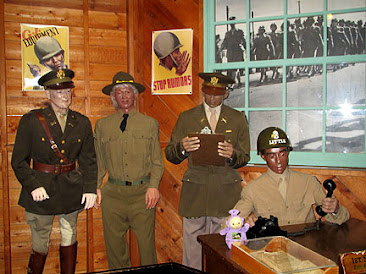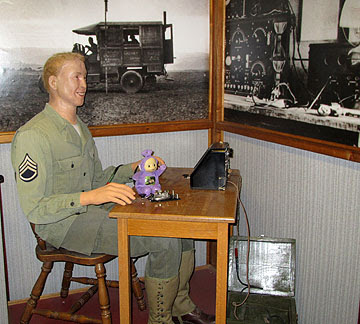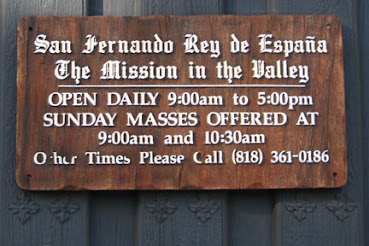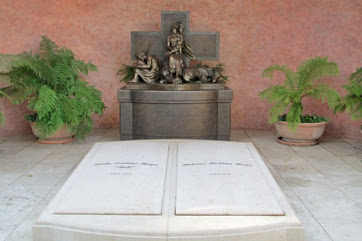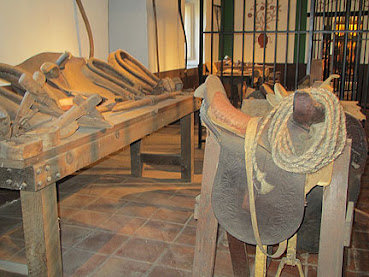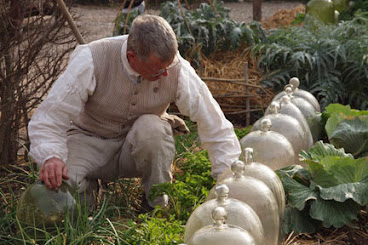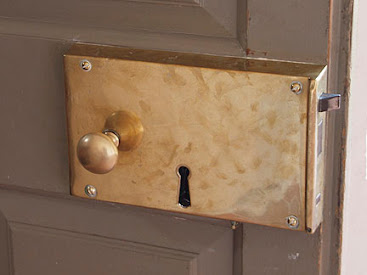Statue signage: “THE BUFFALO SOLDIER – FORT HUACHUCA HONORS THE BUFFALO SOLDIER. A SYMBOL OF THE PROUD TRADITION OF THE BLACK FIGHTING MAN. AND REMEMBERS THE PROMINENT ROLE HE HAS PLAYED IN THE POST’S HISTORY. 3 MARCH 1977 – ARTIST: ROSE MURRAY”
The first Black regiment to arrive at Fort Huachuca was the 24th Infantry in 1892. However, the most renowned Black regiment, the 10th Cavalry Regiment (first to be call Buffalo Soldiers) formed in 1866, arrive here in December of 1913.
In addition, the 9th Cavalry, the 24th and 25th Infantry (all were Black regiments) also served here briefly during the 1890’s. More than any other installation in the U.S. military establishment, Fort Huachuca has earned the title “Home of the Buffalo Soldier.”
Tinky Winky had a lot of fun sneaking into as many displays as possible.
The Museum Annex Building had a large open display.
The main museum building had once been the Officers Club and consisted of several rooms on two floors.
Below left: Buffalo Soldiers played competitive baseball starting in the 1890’s; right: Corporal Freddie Stowers, the only African-American Medal of Honor recipient from WWI.
The regimental band of the 369th, led by Lieutenant James Reese Europe, was largely responsible for introducing blues and jazz music to the French and to Europe.
The first Black regiments in Europe wore the blue French helmet before switching to the US doughboy helmet. When the 93th Division was reactivated for WWII, they wore a blue helmet patch.
All four Black regiments fought heroically in Cuba during the Spanish-American War of 1989.
The above 10th Cavalry insignia was painted in 1944 by Anna Russell, the first African American graduate of the Philadelphia School of Design for Women.
They also had an Intelligence Museum, of course I kept thinking about the two words that are often used to define the meaning of the word oxymoron.
 |
| Emblem on Front Door |
The Enigma machine, also called Glowworm, the Nazi message scrambler they thought was unbreakable; yet, the British crypt-analysts broke the code early in the war.
 |
| Enigma Machine |
The museums were located in the old part of the fort as evident by these buildings:
When driving around the surrounding land outside of the post, I found this interesting mailbox post:












